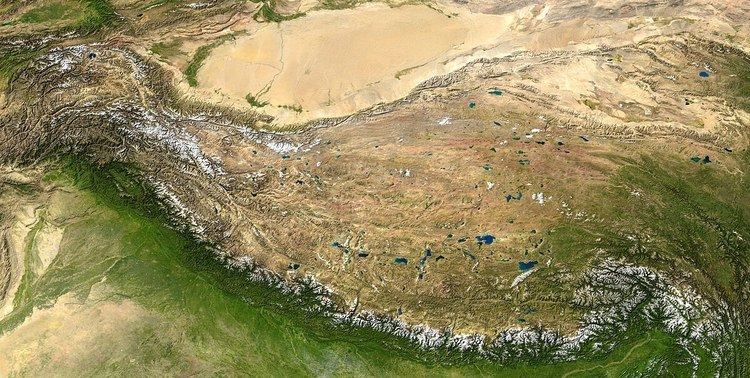 | ||
The following outline is provided as an overview of and topical guide to Tibet:
Contents
- Geography of Tibet
- Environment of Tibet
- Geographic features of Tibet
- Administrative divisions of Tibet
- Government and politics of Tibet
- Executive branch of the government of Tibet
- Legislative branch of the government of Tibet
- International organization membership
- Law and order in Tibet
- Government in exile
- History of Tibet
- Culture of Tibet
- Religion in Tibet
- Art in Tibet
- National symbols of Tibet
- Economy and infrastructure of Tibet
- References
Tibet is a plateau region in Asia and the home to the indigenous Tibetan people. With an average elevation of 4,900 metres (16,000 ft), it is the highest region on Earth and is commonly referred to as the "Roof of the World."
A unified Tibet first came into being under Songtsän Gampo in the 7th century. From the early 17th century until the 1959 uprising, the Dalai Lamas (Tibetan Buddhist spiritual leaders) were, at least nominally, heads of a centralised Tibetan administration, with political power to administer religious and administrative authority over large parts of Tibet from the traditional capital Lhasa. They are believed to be the emanations of Avalokiteśvara (or "Chenrezig" [spyan ras gzigs] in Tibetan), the bodhisattva of compassion.
Geography of Tibet
Environment of Tibet
Geographic features of Tibet
Administrative divisions of Tibet
Administrative divisions of Tibet
Tibet is divided into 7 prefecture-level divisions, 73 county-level divisions, and 692 township-level divisions. The 7 prefecture-level divisions are:
There are also three traditional provinces or regions of Tibet:
Government and politics of Tibet
Politics in Tibet
Executive branch of the government of Tibet
Legislative branch of the government of Tibet
International organization membership
Law and order in Tibet
Government in exile
History of Tibet
Culture of Tibet
Tibetan Culture
